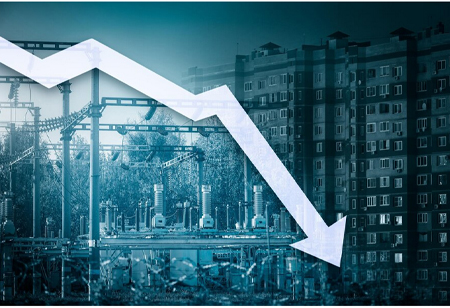
Cabinet Secretary Rajiv Gauba held a meeting with the designated group of secretaries last week to check in on the progress of the production-linked incentive (PLI) scheme launched in March, 2020. The processing of incentives has been slow in some of the sectors and that was the reason why the meeting was held. After the meeting, NITI Aayog has been given the responsibility to review the functioning of the PLI scheme and oversee the responsibilities that are being fulfilled by the management agencies in charge of processing all incentives. Rules can also be tweaked in this regard if required. An inter-ministerial panel observed significantly slow investments under the flagship PLI Scheme this financial year in the textile manufacturing, IT hardware and speciality steel segments. 49,682 Cr. INR worth of investments were planned for FY24 of which 61.8 per cent or over 30,695 Cr. INR have already been made across 14 sectors in the first nine months. The industries for medical devices, automotive, white goods and ACC batteries have encountered a slow progress as well.
"We expect the disbursement to pick up. Projects are on the ground, and investments and employment are happening. The disbursement will follow. But yes, there is a lag," said Rajesh Kumar Singh, the Secretary in the Department for Promotion of Industry and Internal Trade (DPIIT) to the media.
A number of factors are at play when it comes to the ultimate performance of the Indian PLI schemes over the last three years. Substantial investments have been made by the government across sectors despite which slow progress has been observed and various reasons can be held responsible for that.
Leading companies in the Indian renewable energy sector have listed vendors from China as major suppliers in the PLI scheme. Industry giants like Tata Power and Reliance New Energy are among the companies who have listed suppliers from China. Many other big corporations apart from these have listed service providers and supply chain partners from China according to reports published by the media platforms. To name a few, these include ReNew Solar, Avaada Electro and Waree Energies.
One of the winners of the first share of solar PLI, Indosol (Shirdi Sai) has mentioned 65 Chinese vendors out of the 94 vendors listed in total. Reliance New Energy and Tata Power have listed 20 and four Chinese vendors respectively. All the 17 vendors that have been listed by Waree Energies are from China.
According to reports, more than 70 per cent of the Indian infrastructure for solar power generation has been built using equipment coming from China. In this regard, it is worth mentioning that PLI scheme for the solar power sector is primarily aimed at the development of domestic supply chain thus reducing import dependency.
“While Make in India is a great initiative, it has missed the fundamental necessities of creating products and manufacturing in India. Our investment efforts have largely gone into contract manufacturing, rather than designing and developing Indian IP. What Chinese brands did is they saw this as an opportunity to align with the government’s vision without necessarily benefitting from the schemes and bring their assembly lines to India. This has allowed them to thrive in the India market despite government efforts,” Faisal Kawoosa of TechArc told the business daily.
Progress has not been uniform for all schemes despite the investments exceeding the government’s estimate in the last financial year. On an accumulative basis, total exports to India have surpassed 3.20 trillion INR since the launched of PLI schemes whereas investment from the government has been 1.03 trillion INR.
According to meeting minutes, under the PLI Schemes for bulk drugs and medical devices, while the target of investment has been met, actual production/sale has been below target. Under the PLI Scheme for automobile and auto components, production/sales target was achieved but the target of investment was not achieved.
The PLI scheme was launched primarily for 14 business sectors that include mobiles, drones, telecom, textiles, automobiles, white goods, and pharmaceutical drugs. The schemes were rolled out one by one during 2020-21 but the disbursement of incentives started only in the next financial year i.e 2021-22.
“Shortfalls” have been observed regarding the progress of manufacturing sector under PLI schemes for various sectors like textile products, IT hardware, and specialty steel with respect to targets of investment. The Rs 1.97 trillion worth PLI scheme by the BJP led government aims at making India a powerhouse in manufacturing, improving the cost competitiveness of locally produced goods, creating employment opportunities, curbing cheap imports, and boosting exports as well.
The government is in the process of reviewing its PLI scheme that will be addressing the structural problems in the manufacturing sector. The government might be at a state to consider reopening the disbursement of incentives for various sectors and can also extend it to more sectors than that was initially planned. After the PLI scheme was first launched in 2020 for only three chosen sectors, more were added later. The scheme has been made available for different segments at different times.
The government allocation was of 1.97 lakh crore INR for all the PLI schemes that was directed towards 14 sectors. Till March 2023, 733 applications were approved across 14 sectors with an expected investment of Rs 3.65 lakh crore. Total investments of 62,500 crore INR has been released till March 2023 that has resulted in incresed production/ sales of over Rs 6.75 lakh crore.
We use cookies to ensure you get the best experience on our website. Read more...